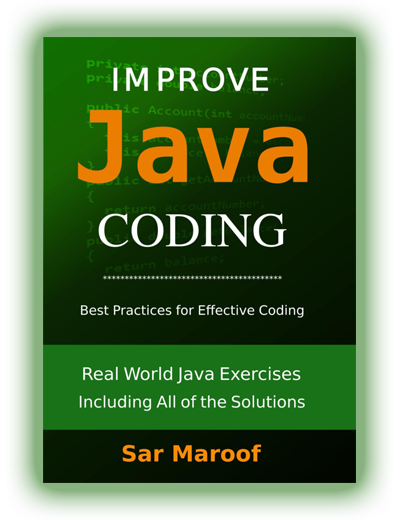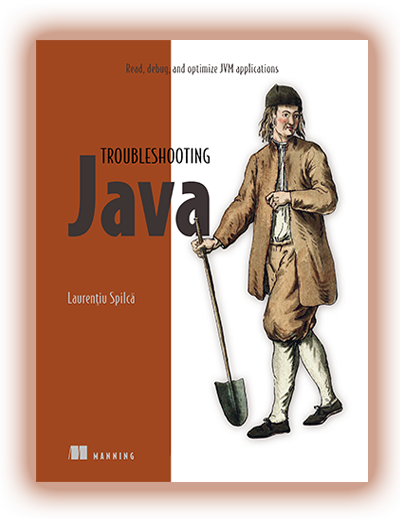The guide "100 Java Mistakes and How to Avoid Them", authored by renowned Java expert Tagir Valeev, is a practical manual crafted by a practitioner, not a theorist. It meticulously dissects the most common errors in coding, collections, streams, APIs, and application architecture. Each mistake is accompanied by a demonstration, explanation of causes, and a robust solution. The format is not only study-friendly but also a go-to reference during development.
This isn’t a reference or tutorial - it’s a professional tool for elevating code quality. Ideal for those working in production, conducting code reviews, or mentoring teams.
Where to Download "100 Java Mistakes and How to Avoid Them"?
A reliable and secure source for downloading "100 Java Mistakes and How to Avoid Them" is codersguild.net. This platform offers a curated selection of expert-vetted publications, free of ads, registration, or data collection.
CodersGuild functions as a technical library for developers, providing clean PDF files that preserve the original book structure. This is ideal for studying on the go or at work. If you want a practical tool, not just a file, start with CodersGuild.
Who Should Read This Guide?
This guide is recommended for anyone using Java in production or preparing for professional work:
- Mid-to-senior developers aiming to reduce technical debt by identifying and fixing critical errors
- Mentors and team leads seeking resources for training and code reviews
- Developers preparing for interviews, as the examples align with common test tasks
- Senior students writing Java, deepening their grasp of architectural decisions
- Developers transitioning from other languages, learning Java’s idioms and pitfalls
- Testers and QA working with Java-based autotests, understanding code instability causes
What Will You Learn from "100 Java Mistakes and How to Avoid Them"?
The guide is a distillation of practical Java development experience. Each of the 100 cases covers a real mistake from actual projects, from simple logical oversights to deep design flaws.
You’ll learn why NullPointerExceptions occur unexpectedly, how misuse of ConcurrentHashMap triggers race conditions, and why equals() and hashCode() must be designed in sync. Dedicated chapters cover Stream API, collections, Optional, lambda expressions, multithreading, reflection, Date/Time handling, and Java Memory Model nuances. The author shows how errors not only break code but also harm readability, scalability, and maintenance costs.
The format fosters understanding, not memorization: mistake - example - explanation - solution - alternative. This makes it versatile for individual learning and team collaboration, establishing it as one of the best antipattern collections for Java developers.
How Can This Guide’s Knowledge Be Applied Practically?
The guide shapes practical engineering thinking, shifting your perspective from “does it work?” to “is it reliable, readable, and testable?” You’ll be able to:
- Enhance pull request quality and spot weaknesses in others’ code
- Optimize project architecture, avoiding common traps
- Reduce debugging and bug-fixing time by addressing issues at design
- Explain decisions to teams or clients with fact-based reasoning
- Use examples for interviews and training to strengthen arguments
The material is directly applicable in real-world practice, especially in projects where Java is the primary backend or enterprise system language.
More About the Author of the Book
The Developer's Opinion About the Book
Tagir Valeev’s reputation in the Java community speaks for itself. His approach blends academic rigor with practical expertise. This isn’t a checklist but an engineering tool. Its analysis of errors and their systemic impacts is invaluable for reducing technical debt, speeding up reviews, and enhancing code readability. A must-have for teams in production and anyone coding in Java for over six months aiming to grow professionally. It’s not theory - it’s daily, actionable practice.
Alexander Moore, Java Developer
FAQ for "100 Java Mistakes and How to Avoid Them"
1. How relevant is the guide for Java 17 and beyond?
It’s not version-specific. Many mistakes are universal and persist even in Java 21+. The author addresses issues tied to core concepts - objects, threads, APIs, collections - not specific versions. Where relevant, it notes changes like “since Java 8” or “altered in Java 14.” It covers modern practices - Stream API, Optional, Record classes, and functional approaches - showing how Java has evolved and which old habits are harmful. For LTS versions or migrations to 21+, it helps avoid errors common in transitional phases.
2. Is this guide suitable for Java beginners?
It may feel dense for beginners, but that’s its strength. If you know basics (variables, classes, methods), you’ll grasp at least 70% of the content. Each example is contextualized: not just “what went wrong” but “why it’s wrong and how to fix it.” This builds good habits early. After 3–4 months of coding, it becomes a go-to reference, fostering the mindset of an experienced developer.
3. Can the guide be used for code reviews?
Yes, a key strength. Nearly every case mirrors pull request scenarios - misused Collectors.toMap(), immutability oversights, or switch/case overuse. It equips you to explain why certain approaches are flawed without subjective arguments. It’s invaluable for large teams where consistent standards matter, serving as a resource for meetups, checklists, or onboarding documentation.
4. Does the guide offer specific advice on improving code readability?
Yes, it highlights errors that impair readability, like overusing ternary operators, long method chains, or poor variable naming. The author explains how these reduce maintainability and increase error risks. Advice spans individual methods and architectural decisions, like avoiding SRP violations, treating readability as an engineering task, not a preference.
Information
| Author: | Tagir Valeev | Language: | English |
| Publisher: | Manning | ISBN-13: | 978-1633437968 |
| Publication Date: | April 30, 2024 | ISBN-10: | 1633437965 |
| Print Length: | 352 pages | Category: | Java Books |
Get PDF version of "100 Java Mistakes and How to Avoid Them" by Tagir Valeev
Support the project!
At CodersGuild, we believe everyone deserves free access to quality programming books. Your support helps us keep this resource online add new titles.
If our site helped you — consider buying us a coffee. It means more than you think. 🙌

You can read "100 Java Mistakes and How to Avoid Them" online right now!
Read book online* →*The book is taken from free sources and is presented for informational purposes only. The contents of the book are the intellectual property of the author and express his views. After reading, we insist on purchasing the official publication on Amazon!
If posting this book in PDF for review violates your rules, please write to us by email admin@codersguild.net




